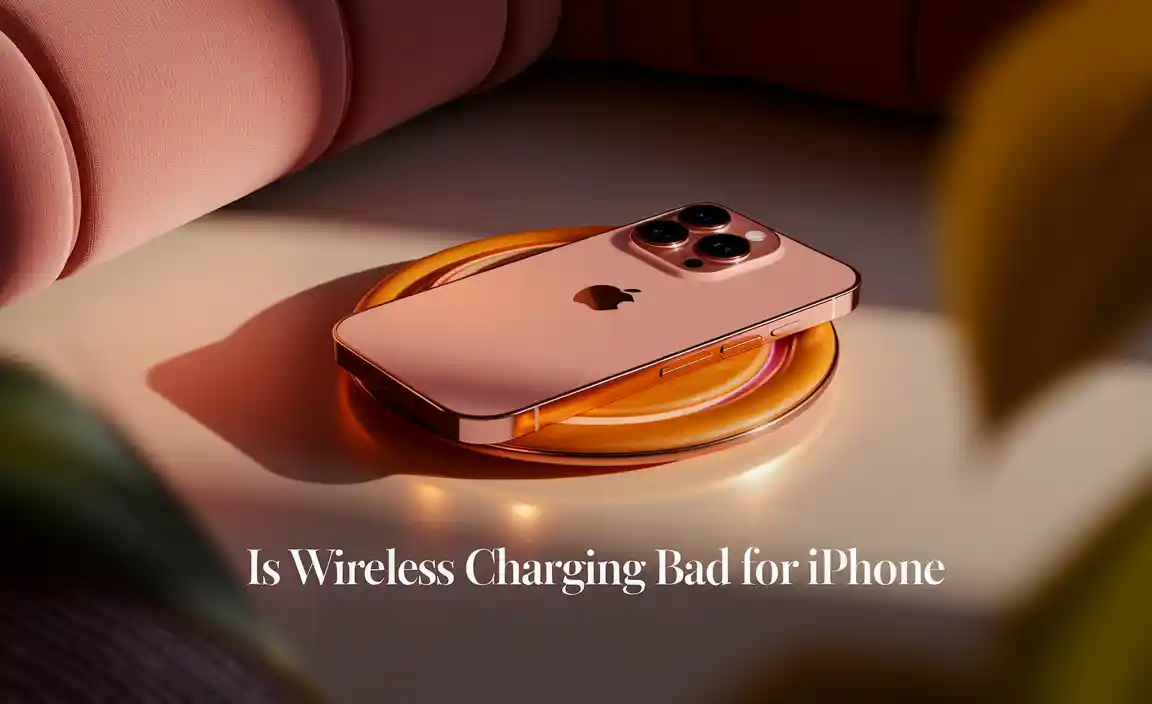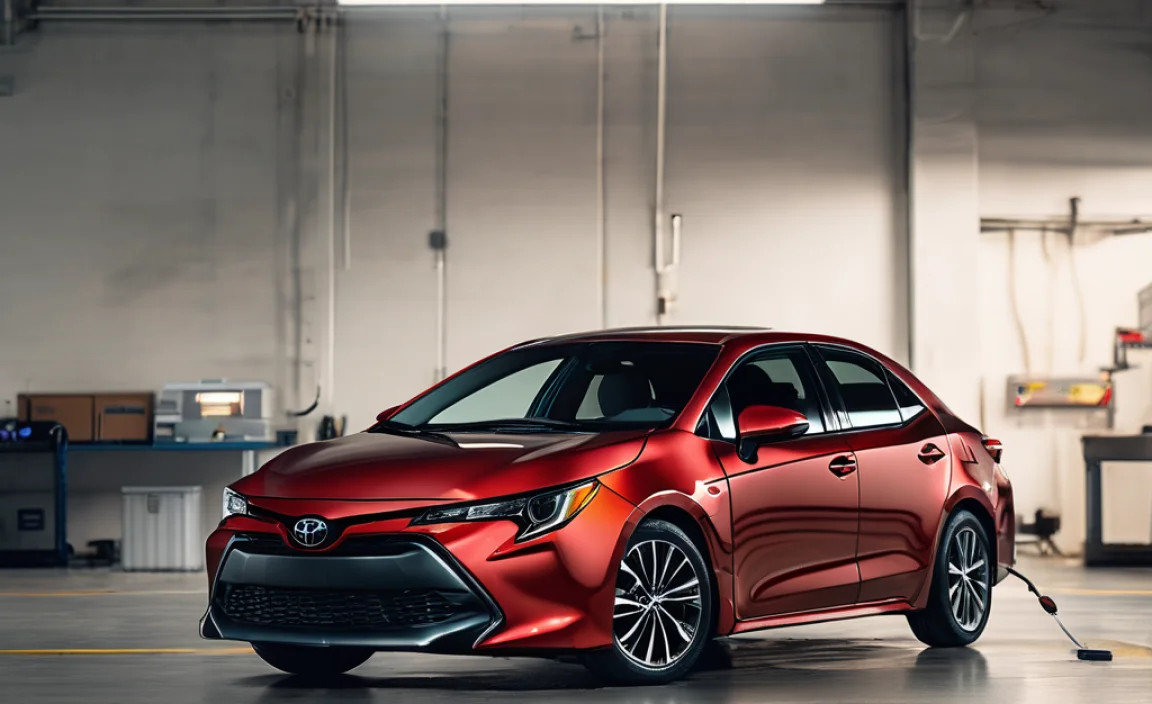Trying to figure out how to recharge your phone battery or deal with a dead car battery? This guide breaks down common battery types, chargers, and power banks, offering simple, safe steps to keep your devices and car running smoothly. Get back to full power, no stress!
We’ve all been there. Your phone shows a sliver of battery life just as you need to make an important call, or your car won’t start on a cold morning. It’s frustrating and inconvenient, leaving you feeling stranded and powerless. But don’t worry! Understanding the basics of batteries, from the tiny ones in your phone to the big one in your car, can save you time, money, and a lot of headaches. This guide is designed to make these power sources simple, clear, and easy to manage, even if you’ve never thought much about batteries before. We’ll walk you through everything you need to know to keep your devices charged and your car ready to go.
Understanding Your Power: Batteries, Chargers, and More
Batteries power our modern lives, but they can seem a bit mysterious. From the portable power in your pocket to the engine starter in your vehicle, batteries are everywhere. Let’s demystify the common types you’ll encounter and how to keep them working their best.
The Heart of Your Gadgets: Phone Batteries
Your smartphone is your connection to the world, and its battery is its lifeline. Most modern phones use rechargeable lithium-ion (Li-ion) batteries. These are great because they hold a lot of power for their size and don’t have a “memory effect” like older battery types, meaning you don’t have to drain them completely before recharging.
Phone Battery Basics:
- Lifespan: Phone batteries degrade over time. After a few years of regular charging, you might notice your phone doesn’t hold a charge as long as it used to.
- Safety: While rare, damaged or faulty batteries can pose a risk. Never try to swap out your phone battery yourself unless the manufacturer specifically allows it, as it could damage the phone or the battery.
- Signs of Wear: A swollen battery is a serious safety concern and means the battery needs immediate replacement by a professional. Your phone might also start shutting down unexpectedly, even with battery percentage showing.
Keeping Your Phone Alive: Chargers and Adapters
A charger is what brings your phone battery back to life. It converts the AC power from your wall outlet into the DC power your phone needs. The part that plugs into the wall is often called the adapter or power brick, and it connects to a cable that plugs into your phone.
Charger Types:
- Standard Chargers: These are the typical wall chargers that come with most phones.
- Fast Chargers: These deliver more power to charge your phone much quicker. They often use technologies like Qualcomm Quick Charge or USB Power Delivery (USB-PD). Make sure your phone supports the fast-charging standard.
- Wireless Chargers: These work by inductive charging. You place your phone on a pad, and it charges without a physical cable connection. Your phone needs to be compatible with wireless charging.
Choosing the Right Charger:
- Match the Port: Ensure the cable connector (USB-C, Lightning, Micro-USB) matches your phone’s port.
- Check the Power Output: Using a charger with too low an output is safe but slow. Using one with too high an output could potentially damage older or incompatible devices, though most modern devices have protections. It’s always best to use the charger that came with your device or one recommended by the manufacturer.
- Third-Party Cautions: Stick to reputable brands for third-party chargers. Cheap, uncertified chargers can be inefficient, slow, and even unsafe. For more information on USB charging standards, the USB Implementers Forum offers great resources.
The Backbone of Your Car: Car Batteries
Your car battery is a powerhouse, providing the initial jolt of electricity needed to start your engine. It also supplies power to your car’s electronics when the engine isn’t running, like the radio, lights, and security system.
Car Battery Basics:
- Type: Most cars use lead-acid batteries. These are robust and designed to deliver a high burst of power for starting.
- Lifespan: Car batteries typically last 3 to 5 years. Factors like extreme weather, short driving trips, and leaving lights on can shorten their life.
- Maintenance: Many modern car batteries are “maintenance-free.” Older ones might have caps to check and top up the water level, but this is less common now.
When Your Car Won’t Start: Jump-Starting and Replacement
A dead car battery is a common roadside issue. The quickest fix is often a jump-start, but eventually, you’ll need to replace the battery.
How to Jump-Start a Car
This is a skill every driver should know. You’ll need another car with a working battery and a set of jumper cables.
What You’ll Need:
- A working car with a charged battery
- A set of jumper cables
- Safety glasses (recommended)
- Gloves (recommended)
Safety First!
- Make sure both cars are turned off and in park (or neutral for manual transmissions).
- Engage the parking brake on both vehicles.
- Ensure the cars are close enough for the cables to reach but not touching each other.
- Never let the metal ends of the jumper cables touch each other once they are connected to a battery.
- Car batteries contain acid and can produce flammable gas. Avoid sparks near the battery, and never smoke while jump-starting.
Step-by-Step Jump-Start:
- Connect the Red (Positive) Cable:
- Attach one red clamp to the positive (+) terminal of the dead battery.
- Attach the other red clamp to the positive (+) terminal of the good battery.
- Connect the Black (Negative) Cable:
- Attach one black clamp to the negative (-) terminal of the good battery.
- Attach the other black clamp to an unpainted metal surface on the engine block or chassis of the dead car, away from the battery. This is the ground connection and helps prevent sparks near the battery.
- Start the Working Car: Let the good car run for a few minutes to charge the dead battery slightly.
- Try Starting the Dead Car: Attempt to start the car with the dead battery.
- Disconnect Cables (in reverse order): If the car starts, carefully disconnect the jumper cables in the exact reverse order you connected them:
- Remove the black clamp from the grounded metal surface.
- Remove the black clamp from the good battery’s negative terminal.
- Remove the red clamp from the good battery’s positive terminal.
- Remove the red clamp from the previously dead battery’s positive terminal.
- Keep it Running: Let the newly started car run for at least 15-20 minutes (driving it is best) to allow the alternator to recharge its battery.
If the car still doesn’t start after a few tries, there might be a deeper issue, and you should contact a mechanic. For more detailed safety guidelines, consult your vehicle’s owner’s manual or resources like the Royal Society for the Prevention of Accidents (RoSPA).
Replacing Your Car Battery
When your car battery is nearing the end of its life or is consistently giving you trouble, it’s time for a replacement. Most car batteries have a limited warranty, so check if yours is still covered. Auto parts stores often offer free battery testing services.
What You’ll Need:
- A new car battery (ensure it fits your car’s make and model)
- A socket wrench set (usually 10mm or 13mm for terminals and hold-down clamps)
- Gloves and safety glasses
- A wire brush or battery terminal cleaner
- Anti-corrosion spray or grease (optional)
Safety Precautions:
- Car batteries are heavy. Lift with your legs, not your back.
- Batteries contain corrosive acid. Wear protective gear.
- Avoid sparks near the battery.
- Be aware of the car’s computer memory – sometimes a small backup battery is needed to keep settings (like radio presets) when the main battery is disconnected.
Step-by-Step Battery Replacement:
- Locate the Battery: It’s usually under the hood, but sometimes in the trunk or under a seat.
- Disconnect the Negative Terminal First: Using your wrench, loosen the nut on the black (negative, -) terminal. Remove the cable from the terminal and tuck it away so it can’t accidentally touch the battery. This is crucial to prevent electrical shorts.
- Disconnect the Positive Terminal: Loosen the nut on the red (positive, +) terminal and remove the cable.
- Remove the Hold-Down Clamp: Batteries are secured by a bracket or clamp at the base. Loosen and remove the bolts or nuts holding this clamp in place.
- Remove the Old Battery: Carefully lift the old battery out of its tray.
- Clean the Tray and Terminals: Use a wire brush to clean any corrosion from the battery tray and the cable connectors.
- Install the New Battery: Place the new battery into the tray, ensuring it’s oriented correctly (positive and negative terminals in the same positions as the old one).
- Secure the Hold-Down Clamp: Reinstall the clamp to hold the new battery firmly in place.
- Connect the Positive Terminal First: Place the red cable onto the positive (+) terminal and tighten the nut securely.
- Connect the Negative Terminal: Place the black cable onto the negative (-) terminal and tighten the nut securely.
- Apply Anti-Corrosion (Optional): Spray or grease can be applied to the terminals to prevent future corrosion.
- Dispose of the Old Battery Properly: Never throw car batteries in the regular trash. Most auto parts stores and recycling centers accept them for recycling.
Check your vehicle’s owner’s manual for any specific instructions. For official safety recommendations on automotive batteries, the Battery Council International (BCI) provides valuable information.
Portable Power Players: Power Banks
Power banks are portable batteries that you can charge up and then use to recharge your phone or other USB-powered devices on the go. They’re incredibly handy for travel, long days out, or emergencies.
Key Features to Consider:
- Capacity (mAh): This is measured in milliampere-hours (mAh). Higher mAh means more charges. A 10,000 mAh power bank can typically charge a smartphone about 2-3 times.
- Output Ports: Most have USB-A ports, but newer ones also include USB-C ports, which often support faster charging.
- Input Ports: This is how you charge the power bank itself. Common types are Micro-USB and USB-C.
- Fast Charging Support: Some power banks support fast charging protocols for both input (charging the bank) and output (charging your devices).
Using a Power Bank:
- Charge the Power Bank: Connect the power bank to a wall adapter or computer using its charging cable. The indicator lights usually show the charge level.
- Connect Your Device: Use a USB cable to connect your phone or device to one of the power bank’s output ports.
- Start Charging: Your device should begin charging automatically. Some power banks have a power button you might need to press.
Safety Tips for Power Banks:
- Avoid extreme temperatures (hot cars, direct sunlight).
- Don’t use damaged power banks or cables.
- If a power bank gets unusually hot, emits a strange smell, or starts to swell, disconnect it immediately and discontinue use.
Powering Up: A Quick Comparison
Here’s a simple look at how these power solutions stack up:
| Item | Primary Use | Power Source | Rechargeable? | Portability |
|---|---|---|---|---|
| Phone Battery | Powering smartphones and similar devices | Internal to device | Yes (via charger) | Built-in |
| Adapter / Charger | Converting wall power to charge devices | Wall Outlet (AC) | N/A | Small, portable |
| Car Battery | Starting car engine, powering car electronics | Stored chemical energy (lead-acid) | Yes (via car’s alternator) | Heavy, fixed in car |
| Power Bank | Portable charging for USB devices | Stored electrical energy (lithium-ion) | Yes (via wall adapter/USB) | Highly portable |
It’s fascinating how different batteries serve such crucial roles in our daily lives. From keeping our communication devices alive to getting our vehicles moving, these power sources are essential. Understanding their basic functions and how to care for them, whether it’s a simple phone charger or a robust car battery, can lead to greater reliability and fewer unexpected problems.
Frequently Asked Questions (FAQ)
Q1: How do I know when my car battery needs replacing?
A: Signs include slow cranking when starting the engine, dimming headlights, clicking noises when trying to start, or a warning light on your dashboard. Most batteries also have a warranty life of 3-5 years, so if yours is older, it’s worth testing.
Q2: Can I use an off-brand charger for my phone?
A: It’s best to stick with reputable brands or the charger recommended by your phone manufacturer. Cheap, uncertified chargers may not charge efficiently and, in rare cases, could potentially damage your phone or pose a safety risk.
Q3: My phone battery drains very quickly. What can I do?
A: First, check your phone’s battery usage settings to see which apps are consuming the most power. Reducing screen brightness, turning off unnecessary background app refresh, and disabling location services when not in use can help. If the problem persists, your battery might be nearing the end of its lifespan and may need professional replacement.
Q4: Is it dangerous to leave a power bank plugged in after it’s fully charged?
A: Modern power banks and chargers have built-in safety features to prevent overcharging. Once the power bank reaches full capacity, it should stop drawing power. However, for maximum battery longevity and safety, it’s good practice to unplug it when not needed, especially if you’re concerned about heat buildup.
Q5: What’s the difference between a car battery and a power bank?
A: A car battery (lead-acid) is designed to provide a massive burst of energy to start an engine and then be continuously recharged by the car’s alternator. A power bank (lithium-ion) is designed for portable, on-demand charging of smaller electronic devices like phones and tablets.
Q6: Can I use a jump starter pack instead of another car?
A: Yes! Jump starter packs (portable jump starters) are very convenient. They are essentially compact power banks with enough power to start a car without another vehicle. Follow the manufacturer’s instructions carefully when using one.
Q7: How important is the “mAh” rating on a power bank?
A: The mAh (milliampere-hour) rating tells you how much energy the power bank can store. A higher mAh means it can charge your devices multiple times. For example, a 10,000 mAh power bank will give more charges than a 5,000 mAh one.
Understanding the role of adapters, batteries, and power banks—from the compact ones in our phones to the heavy-duty ones in our cars—empowers us to manage our energy needs more effectively





